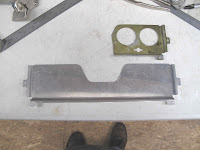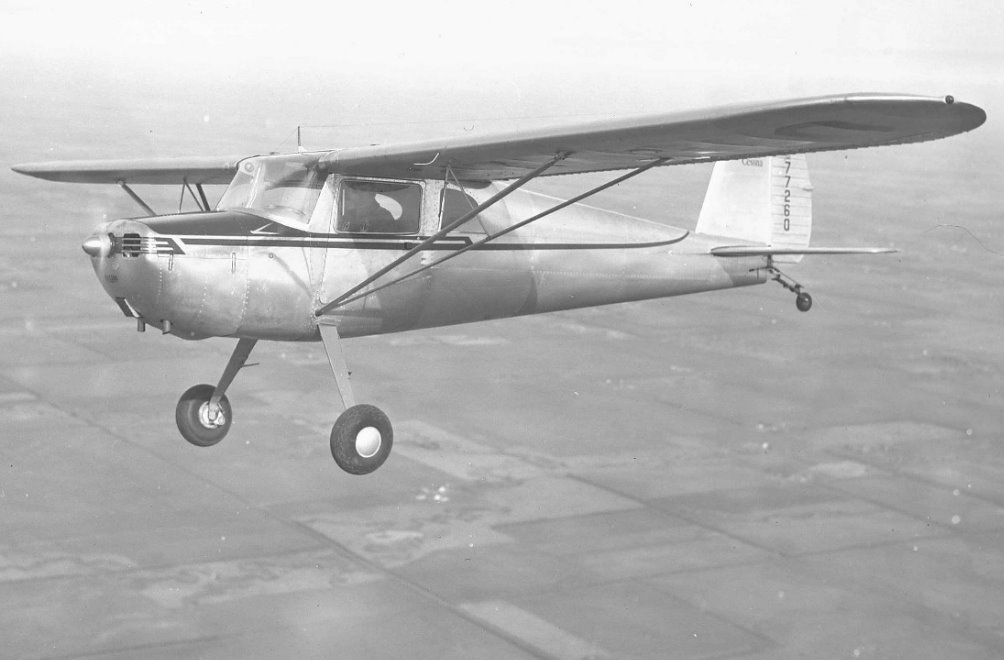 The primary instruments are on the oval shock mounted panel (1). The ammeter, clock, oil pressure and oil temperature are on a stationary (not shock mounted) panel (20). This panel is screwed to the back of the large panel (72) which is riveted into the fuselage structure. This makes a simple mount for the gauges and makes a nice box for lighting the gauges. Unfortunately someone cut off most of the panel, for reasons I wouldn't even attempt to guess. At least there was enough to figure out how it was made.
The primary instruments are on the oval shock mounted panel (1). The ammeter, clock, oil pressure and oil temperature are on a stationary (not shock mounted) panel (20). This panel is screwed to the back of the large panel (72) which is riveted into the fuselage structure. This makes a simple mount for the gauges and makes a nice box for lighting the gauges. Unfortunately someone cut off most of the panel, for reasons I wouldn't even attempt to guess. At least there was enough to figure out how it was made.
The panel is made from .032" 2024-T3 aluminum. The notch in the middle provides clearance for the center instrument on the main panel. I made the blank long on each of the folded sides so I could cut everything to fit after making the bends. The first bend was an easy 90 degree bend along the bottom.
I don't have a break to form the second bend so I used a piece oak the thickness (3/8") of the step in the bends, all clamped down to a board under the panel. I routed a 1/8" radius on the edge where the bend was formed. The piece of 1x2 behind the bend is there to keep the bends square. The piece of oak needed a 5-7 degree taper to allow for spring back in the bend. Since the bend gets trimmed so close it was easier to just bend the ends with the tabs to an exact 90 degrees after trimming.
A block of wood with the relief angle on it worked great for for the first bend on the ends.
The same piece of oak was used for the end bends. One thing you can see in this picture which wasn't in the long bend is the clamps used to hold the backing block tight while making the bend to get a nice tight bend .
The flanges are all bent, ready to trim
The radii in the corners of the tabs were punched and the tabs cut to size. The long cuts were made with the band saw.
The next step was to locate the instrument holes. I'm tall and with the instruments in the original locations the top of the instruments are blocked by the front panel. With a little work I figured out I needed to move the gauges down 1/8" so I can see the whole dial in the panel opening. The colored marks were how I worked out the offset.
The panel needs the holes for the lights and some paint to help reflect the light. I have an idea about the paint color, etc. I'll cover it later.










No comments:
Post a Comment